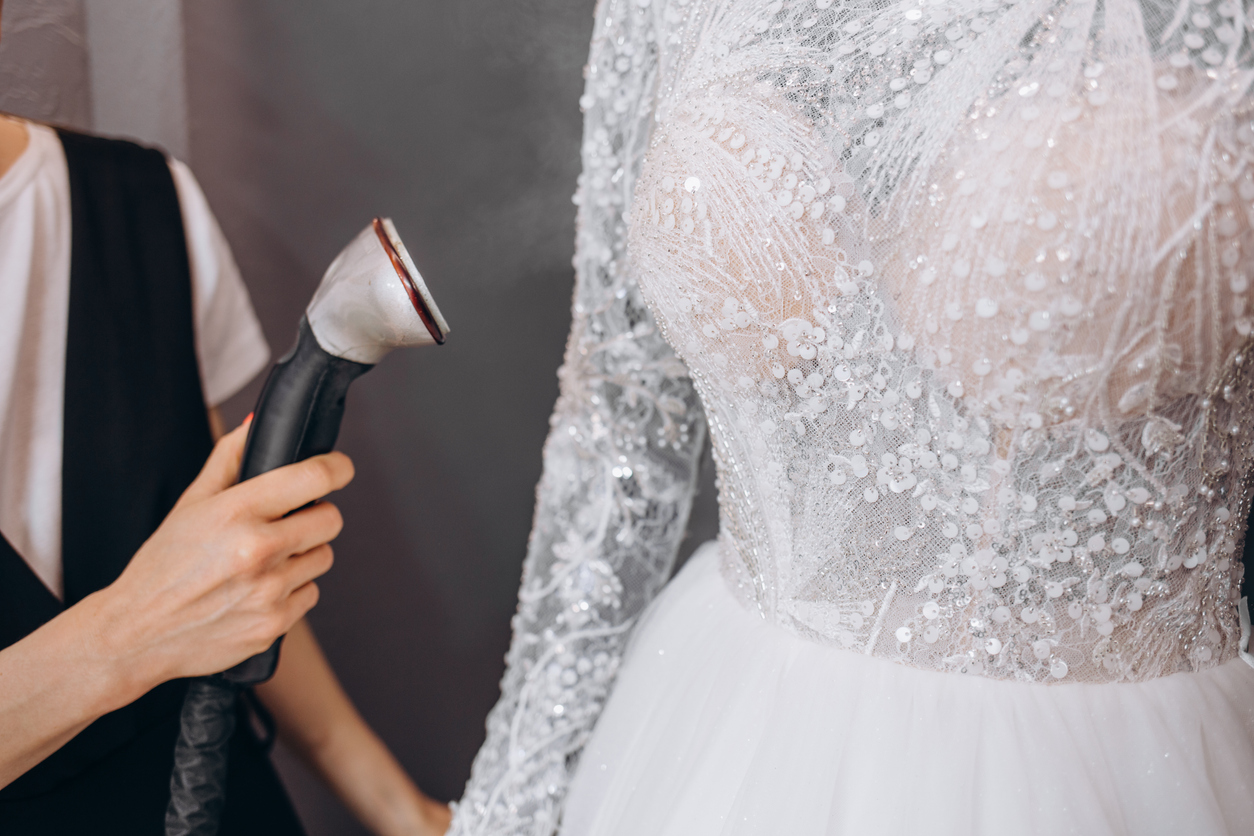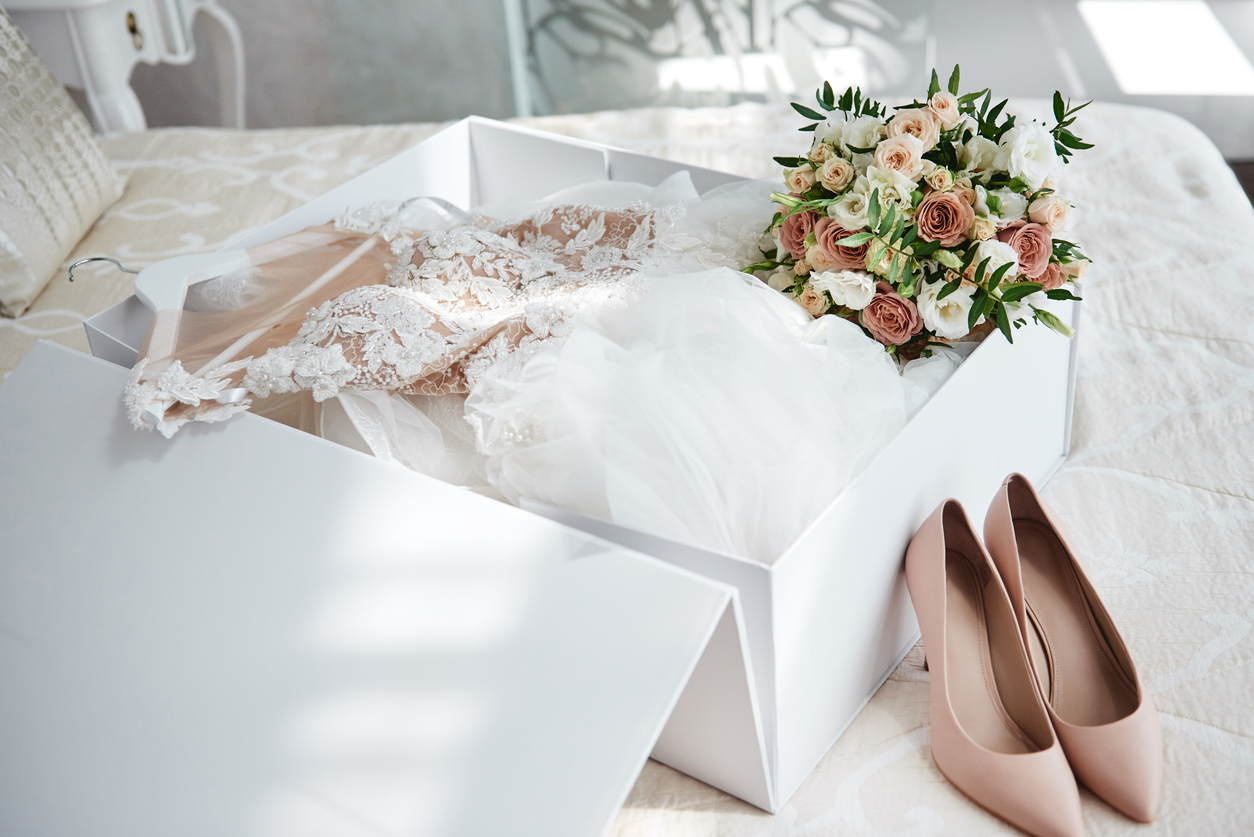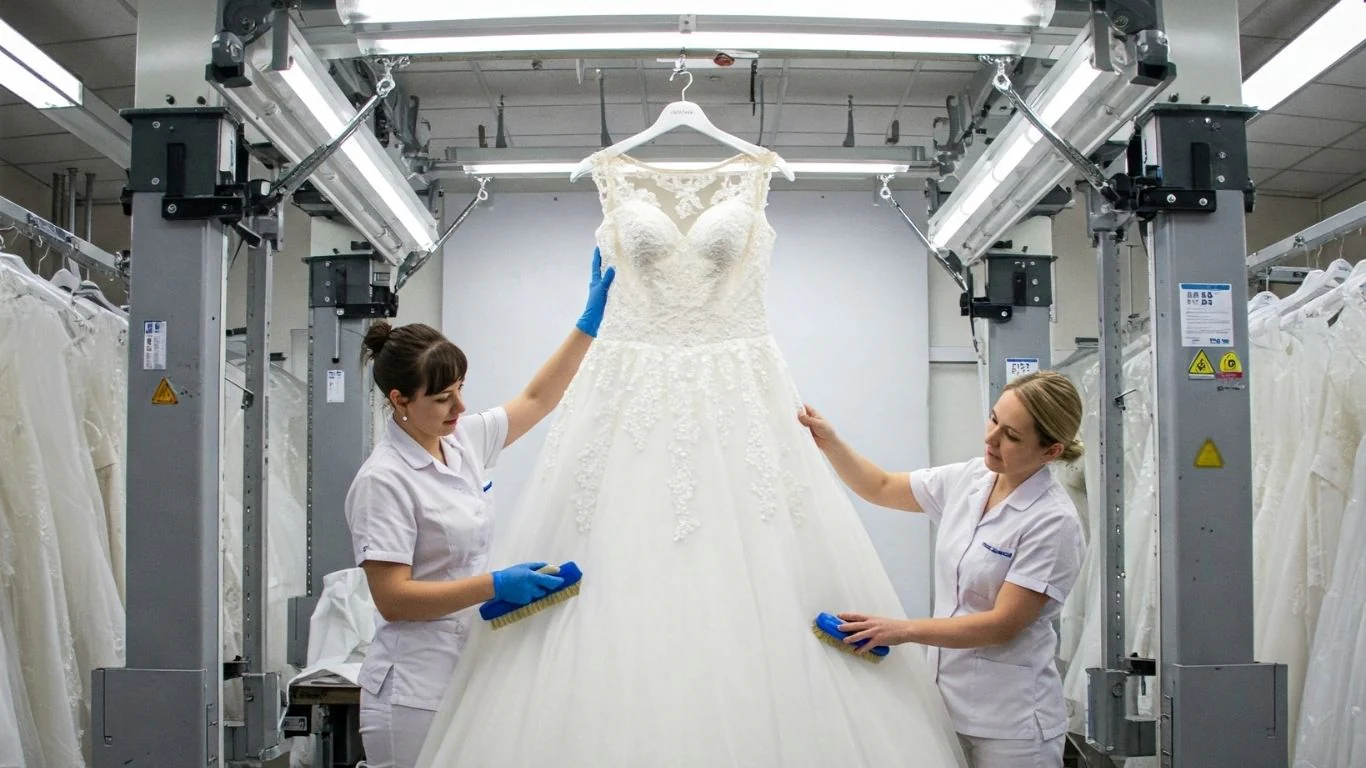Embellished Dress Preservation 101: All You Need To Know + More

The lace that whispers romance. The silk that glides like liquid light. The shimmer of beads and sequins that capture every glance. These intricate details are what make a wedding gown unforgettable, and what makes preserving an embellished dress a delicate art. Dress preservation isn’t just about keeping the fabric spotless; it’s about safeguarding every bead, crystal, and thread that tells a story.
While the ultimate goal is to cleanse the gown, the greatest risk often lies in mishandling its smallest details. Even methods marketed as “gentle” can devastate a heavily beaded masterpiece. True preservation requires precision—a localized, multi-step approach executed by experts who understand that beauty this intricate demands both science and patience.
The Challenge of Cleaning Beaded Wedding Dress Fabrics
#1. The Risk of Mechanical Stress and Abrasions
Beads, sequins, and crystals are beautiful, but fragile. When treated roughly, two issues arise: the weight of the embellishments strains the delicate threads beneath, and their hard edges can scratch or tear soft fabrics. Machine-based cleaning is particularly hazardous, as it can crack plastic sequins, unravel threads, and leave permanent marks on silk or satin. For preservation specialists, minimizing mechanical stress is rule number one in protecting embellishments.
#2. Why Handwork Is Essential: Specialists Clean Individually
Because these gowns cannot withstand harsh motion or aggressive chemicals, much of the cleaning process relies on precise, hands-on techniques.
Do specialists clean each bead or crystal individually? In effect, yes. High-quality preservation often involves micro-hand-cleaning, especially in areas where oils and makeup accumulate, like the neckline, cuffs, and waist. Experts may use soft-bristled brushes or precision tools, such as micro-suction devices, to lift residue without disturbing the intricate embellishments.
It’s slow, meticulous work that’s more akin to restoration than simple cleaning. Each stroke is executed with surgical precision, ensuring that every bead remains luminous and every thread stays secure. This hands-on care is the cornerstone of safe, effective preservation for beaded and crystal-adorned gowns.
Protecting the Integrity: Heat, Chemicals, and Solvents
#1. The Glue Dilemma: How Heat Affects Preserving Sequins on Gowns
Modern gowns often rely on heat-sensitive adhesives to secure beads, sequins, and crystals, which creates one of the biggest risks for at-home care. Can heat or harsh chemicals loosen this glue? Absolutely. High-temperature cleaning, steam, or aggressive pressing can melt or weaken adhesives, causing entire sections of embellishments to fall away.
Professionals navigate this challenge by using controlled, low-heat—or no-heat—techniques alongside carefully selected solvents that have been tested for compatibility with both the adhesive and the fabric. This deliberate chemical mindfulness is what keeps the sparkle intact and ensures sequins remain firmly in place on gown designs.
#2. Safe Cleaning for Crystals: The Chemical Compatibility Test
Not all embellishments respond the same way to cleaning agents. Glass beads, acrylic crystals, and plastic sequins each react differently to solvents, and some materials can cloud, discolor, or even dissolve if treated incorrectly.
To avoid disaster, experts always begin with a chemical compatibility test before applying any cleaning solution. This quiet but essential step is the science behind safe crystal preservation, ensuring that every bead, sequin, and gem retains the clarity and brilliance it had on your wedding day.
The Preservation Hierarchy: Embellishment Protection in Storage

#1. Delicate Gown Cleaning and Structural Support
Once a gown has undergone specialized cleaning, proper support becomes essential before storage. Leaving a heavily beaded section folded on itself can lead to strain, creases, or even fabric breakage over time. To prevent this, preservation experts use archival, acid-free tissue or foam to support and separate the layers of the gown.
These materials distribute weight evenly, shielding delicate threads and maintaining the integrity of heavy embellishments. It’s this careful attention to structural support that distinguishes a gown that merely survives from one that endures gracefully, preserving both beauty and craftsmanship for years to come.
#2. Final Inspection and Archival Boxing
Before the gown is retired to storage, it undergoes a meticulous final inspection. Every seam, thread, and embellishment is scrutinized for strength and stability, ensuring that no detail is overlooked. Only after passing this rigorous review is the dress placed into an archival, acid-free storage box—a home designed to safeguard its splendor for decades.
With professional help, like that offered at Dress Preservation, your gown is treated not just as fabric, but as a legacy: every sparkle, every stitch, every cherished detail honored and protected for generations to come.
Visual Data Reference
 Featured Image: Fenton Roman/iStock
Featured Image: Fenton Roman/iStock
For the latest in fashion, lifestyle, and culture, follow us on Instagram @StyleRave_
—Read also








Leave a Reply